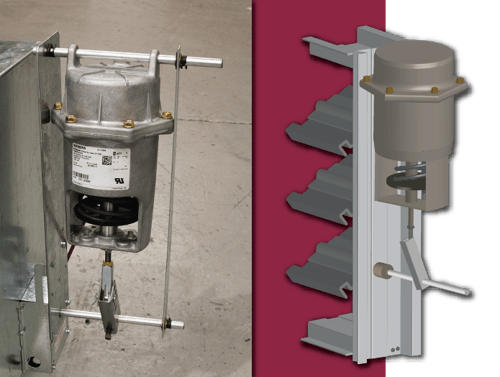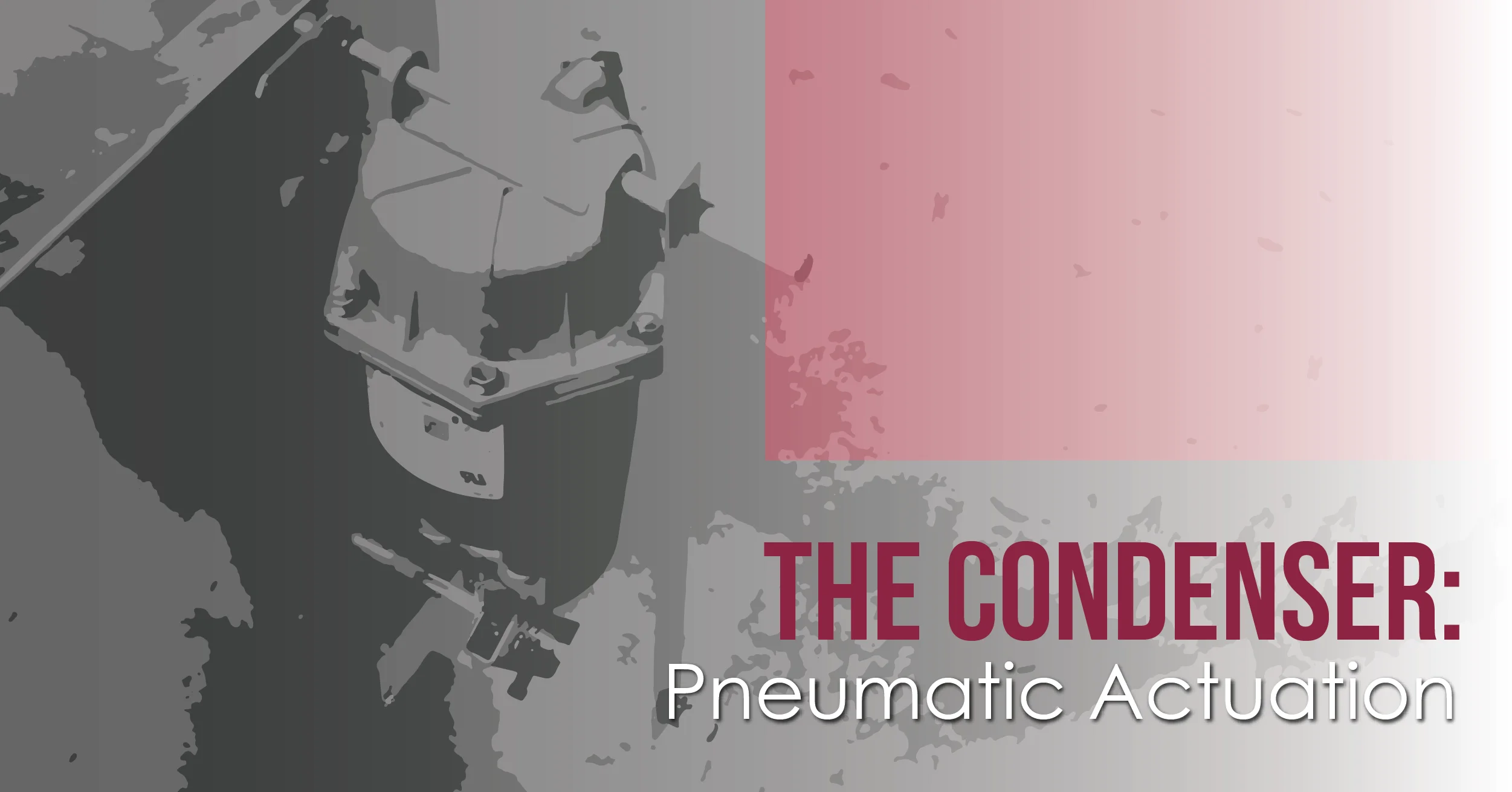Pneumatic actuators use air power to rotate blades, but there are a few things to consider when using one. Learn more about pneumatic actuation in this Condenser article.
Actuators for Blade Rotation
Adjustable blades need an actuator to drive their rotation. Otherwise, they won’t move. There are three distinct kinds of actuators for this task: manual actuators, electric actuators, and pneumatic actuators. Each type uses a different method of driving blade rotation, but the result is the same. For this Condenser, let’s examine the air-powered pneumatic actuators.
The Air-Powered Actuator
The term “pneumatic” refers to something that is “moved or worked by air pressure”. Pneumatic actuators use an internal piston that is driven by pressurized air. When installed, the piston will be connected to the axle of the driving blade via a clevis. Central air compressor feeds air to the actuator through specialized tubing.
When a damper needs to open, the central air compressor will direct air to the actuator through the tubes. The air will move through the tubes and into a chamber inside the actuator. As this chamber fills, the air pressure will push down the piston, which drives the clevis attached to the axle. The actuator begins rotating the blade axle to the open position as it fills. To close the damper, the actuator will release the air inside the chamber, which causes the piston to contract back to its original position. As the piston moves, the attached axles will rotate back to the closed position. Every pneumatic actuator will have a pressure range expressed in pounds per square inch (PSI), which refers to the amount of air pressure that the actuator can hold.
 On the left: the actuator has no air and the damper's blades are closed. On the right: air has filled the internal bladder and the damper's blades are open.
On the left: the actuator has no air and the damper's blades are closed. On the right: air has filled the internal bladder and the damper's blades are open.
Pneumatic actuators can provide a measure of automation to dampers and adjustable louvers, at a low cost. However, there are several things to consider when choosing a pneumatic actuator over other actuator types. They can be a cost-saving option, assuming the building has a central air compressor and the necessary tubing in place. This system should be in place before adding pneumatic actuators.
Pneumatic actuators require more frequent inspection and will need to be replaced on a regular basis. They cannot be easily repaired in the field like an electric actuator. The internal bladder wears down and loses its ability to inflate over time. When this happens, the actuator will need to be removed and replaced with a new one.
Want to learn more about actuators? Click here for our article on all actuator types.

If the building is equipped for it, consider adding pneumatic actuators to your dampers. Save money and use air power to control your dampers.
For more on dampers and actuators, check out these Newsstand articles:
- Damper Blades, A Primer
- Four Ways to Make Efficient Dampers
- The Condenser - Product Spotlight: The 517-518 Series
MCDLG & Continuing Education
Want to know more? MCDLG offers a free self-paced course on control dampers.
"An Introduction to Air Control Dampers" covers the basics of control dampers: what they do, where they go in an HVAC system, the principles that dictate their performance, and guidelines for installing and maintaining your control dampers.
This course provides continuing education credits for a variety of institutions, including ASHRAE's PDUs. Learn the basics of control dampers and earn credit, at your own pace. Visit the MCDLG Campus Portal today!
Do you have a question about something we haven't covered here? Or do you need help from industry experts? MCDLG can help. Contact us by clicking on the button below. 
.webp?width=91&height=70&name=MCDLG%20Logo%20(Resize).webp)





